The content of the article
When a child has a stomach ache, many experienced mothers, even before the doctor arrives, start to assume - indigestion, poisoning, eating new, unfamiliar products. Diagnosis is complicated if the child is small and cannot show exactly where it hurts and cannot tell about the nature of the pain. In such cases, some mothers begin to suspect appendicitis with apprehension. Of course, only a doctor can confirm or refute the diagnosis, but parents should be able to distinguish between some of the primary signs of appendicitis and, if necessary, urgently take the child to the hospital. Today we’ll talk about the features of the course of appendicitis in children, the symptoms and causes of the disease, as well as the surgical treatment of inflammation.
Features of the course of appendicitis in children
Many people mistakenly believe that appendicitis occurs only due to clogged intestines, when a person consumes seeds and nuts with husks. Moreover, there is a myth that children do not have appendicitis. But this is not so. Of course, the appendix can become inflamed due to the ingress of food debris, but this is not the only reason. Appendicitis can become inflamed even in infants who have not tried anything except mother’s milk.
Appendicitis is an inflammation of the appendix, a small appendix of the cecum. Inflammation can be caused by various reasons - we will talk about them a little later. Most often, appendicitis develops in adolescents - 13-19 years old. Less commonly, the appendix can become inflamed in primary school children. Appendicitis can also affect a baby, but this is extremely rare.
A feature of the course of appendicitis in children is that the disease develops extremely quickly. Everyone knows that with appendicitis you need to see a doctor as soon as possible. Surgery can save a person from peritonitis - there is simply no other effective treatment for appendicitis. In the case of children, you need to respond as quickly as possible. The fact is that some organs and parts of the peritoneum in children are not developed and are formed only by the teenage period. We are talking about a large omentum, which is formed only during puberty of a teenager. He is able to protect and as if to fence off the inflamed area. Since the kids have a large omentum not yet developed, appendicitis proceeds rapidly, until the last not letting itself know.
Among the features of the course of appendicitis in children, localization of pain can be called. In adults, "appendicitis" pain is located on the right side below the navel. The structural features of the child’s body suggest that the pain with appendicitis will be localized above the navel - by 3-4 cm in infants, by 2 cm in children under three years of age, and only 1 cm in a child of 10 years old. , as well as the appendix, are displaced. So what symptoms in a child can tell about a possible appendicitis?
How to recognize appendicitis in a child
Here are some symptoms that should alert parents.
- The very first thing that happens to a child is that he will feel worse. This can be accompanied by various symptoms - apathy, tearfulness, bad mood, refusal to eat, etc. From this moment, the mother should closely monitor the baby and pay attention to the accompanying manifestations and signs.
- Appendicitis is necessarily accompanied by pain in the abdomen. A child may complain of spatial abdominal pain.Often children, especially small ones, do not indicate the exact location of the pain, they say that the stomach hurts in general. In some cases, pain can be given to the sides, pelvis, and even the spine.
- Finding out what and where the child hurts, try to calm the child and calm down herself, often older children can lie and not complain until the last of the pain, because they are afraid of surgery, hospitals, doctors, etc.
- It is important to understand that inflammation can develop in a matter of hours and will make itself felt unexpectedly. The abdomen can begin to hurt immediately at school or kindergarten, on the street, etc.
- If the abdominal pain is minor, follow the baby for a while. On the first night, the child may sleep poorly, he constantly screams, cries, whimpers, groans.
- Try to touch the baby’s stomach - if he pulls your arm, pulls away, cries out sharply from pain, most likely it is appendicitis.
- It is extremely difficult to diagnose inflammation in young children in the first months of life, since many symptoms may be similar to infant colic. Unfortunately, in most cases, appendicitis in infants is diagnosed after peritonitis.
- Follow the baby should be extremely careful. With appendicitis, the baby is constantly crying, regardless of the time of day. With colic, children are usually naughty and cry at the same time of day. The baby can squeeze the legs under it, roll it over, cry out when touching the abdomen, tries to lie on its left, painless side.
- Very often appendicitis at any age is accompanied by profuse vomiting and a feeling of nausea, diarrhea. With diarrhea, mucus may be present in the feces. Sometimes disorders with stool can be caused not by diarrhea, but rather by constipation.
- The inflammation can be so extensive that the pain passes to the genitourinary system. Older children may complain of pain when urinating, small children just cry in the process.
- Like any inflammatory process, appendicitis is accompanied by an increase in body temperature. It can be either a long low-grade fever, not exceeding 37.5 degrees, and very high up to 40 degrees. But not in all cases, the temperature can be considered a fundamental symptom, sometimes appendicitis proceeds without its increase.
- A child with appendicitis can become pale, often inflammation is accompanied by excessive thirst and dry mouth.
- With mild pain, the child may squat during the game and press his right foot to his stomach in search of a comfortable, painless posture.
- Another way to detect appendicitis in a child is to feel his stomach. In a healthy baby, the abdomen should be soft. A hard and tense stomach indicates inflammation.
- In the acute stage of appendicitis, the child will not be able to stand up straight and walk even a few steps - this will bring him severe pain on the right side of the abdomen.
- Since it is always difficult to diagnose appendicitis in a child, doctors use this method. The baby needs to be put on a flat surface, raise the right leg and bend it at the knee. If at the same time the child is pierced by acute pain in the region of the right side of the abdomen - there is no doubt, this is appendicitis.
If you notice at least a few of the above symptoms in your child, you need to see a doctor as soon as possible to determine the exact diagnosis.
Causes of appendicitis in children
The causes of inflammation of the appendix are largely similar to adult appendicitis, let's try to consider them in more detail.
- In order for the appendix to become inflamed, two conditions must be met - a pathogenic infection entering the rectal cavity and clogging of the appendix. The first can occur with poisoning, microbes, bacteria entering the body.
- Clogging of the appendix can occur for various reasons - from the banal features of the physiological structure of the appendix to clogging with foreign objects.The passage to the appendix can be closed with feces, the remnants of undigested food - husk seeds, nuts, etc.
- The risk of developing appendicitis increases if the child's body is weakened and unable to withstand the inflammatory process. Immunity can be reduced due to frequent illnesses, malnutrition, constant overheating of the child.
- Appendicitis in children often occurs due to the ingestion of foreign objects in the intestine. It happens that children eat berries with seeds, fish bone or, in general, a small detail from a toy can get into the body. This can cause blockage of the appendix.
- Sometimes clogging of the process can occur against the background of active reproduction of helminths in its cavity.
In general, even doctors can’t say with accuracy what caused the inflammation of the appendix in a particular case. The above symptoms are very arbitrary and only increase the risk of appendicitis, although they cannot fully explain the problem.
What to do if a child has suspected appendicitis
If you notice some symptoms in the child that we told you about above, you need to act immediately. It is better to be safe and refute the diagnosis in the hospital than to hope for the best and wait for complications at home.
If you suspect that the child has appendicitis, you need to get to the hospital as soon as possible, where there are operating surgeons. Think about whether it is advisable to call an ambulance or if you can get to the hospital faster on your car. In no case do you need to give your child antipyretic, painkillers, laxatives or other drugs that can reduce the severity of the symptoms of the disease. This will make it difficult to make a correct diagnosis.
In addition, in no case should the child be given intestinal preparations - some formulations can provoke a rupture of the inflamed appendix ahead of time. Also try not to drink or feed your baby, because you may need an urgent operation. Another prohibition - do not apply a hot compress to the sore side until you know the exact diagnosis. With appendicitis, heat will only intensify the inflammatory process. You need to beware of any warming procedures - a hot enema, sitting in a bath with hot water, etc. But you can apply cold, this will narrow the blood vessels and reduce the manifestation of pain. Wrap a piece of ice or frozen meat in a bag and towel, attach it to your stomach - where the pain is most.
You need to put the child in a comfortable position, which gives him less pain, and then take him to the doctor as soon as possible. If the doctor confirms the diagnosis of appendicitis, the baby will have surgery.
No need to be afraid of surgery. To date, the operation to remove the inflamed appendix is considered one of the simplest and most common. A few decades ago there were attempts at conservative treatment of appendicitis - the inflammation was treated with antibiotics, etc. However, today this treatment is ineffective for several reasons. Firstly, the appendix after such exposure sooner or later starts to hurt again - the inflammation resumes. The second reason - the shoot can rupture at any time, this is a big risk. Another reason is that the inflammation becomes chronic, it is expressed by lesser symptoms, but it slowly affects the neighboring organs - the rectum, peritoneum, etc. By removing the unwanted process surgically, we solve this problem once and for all.
Complications of appendicitis are deadly. If the pain suddenly stopped, this can indicate serious consequences, most likely peritonitis occurred - the intestine burst and its contents fell into the abdominal cavity. To prevent this, you need to see a doctor as soon as possible.
How to protect your child from appendicitis
As noted, appendicitis in children can occur for various reasons.To protect your child from appendix inflammation, you need to follow several rules of prevention.
- Nutrition should be proper, balanced, according to the age of the child.
- It is necessary to prevent the development of constipation, especially chronic. To do this, you need to eat more fiber, consume fermented milk products, limit the intake of simple carbohydrates, drink more pure water. After all, fecal stones, which are formed with long-term constipation, are most often the cause of blockage and inflammation of the appendix.
- Monitor the health of the gastrointestinal tract - do not overeat, treat stomach and intestinal diseases on time, regularly do fasting days, cleanse the intestines with laxative products.
- Watch your child so that he does not pick up foreign objects in his mouth. Remove all small toy parts from the access area. Make sure that the child does not swallow fruit bones and other items that need to be spit out.
These rules do not guarantee you one hundred percent protection from appendicitis, but are quite capable of reducing the risk of its development.
Appendicitis is a complex and mild disease at the same time. On the one hand, the surgical operation to remove appendicitis is quite simple, the postoperative period is short - the person is quickly recovering. On the other hand, the diagnosis of appendicitis is rather complicated, especially if the parents associate abdominal pain with food poisoning and until the last they take the child to the hospital. Procrastination can cost a baby life. Therefore, do not be shy and do not be lazy to seek medical help once again. Take care of the child, because he no longer has anyone to hope for.
Video: symptoms of appendicitis in children

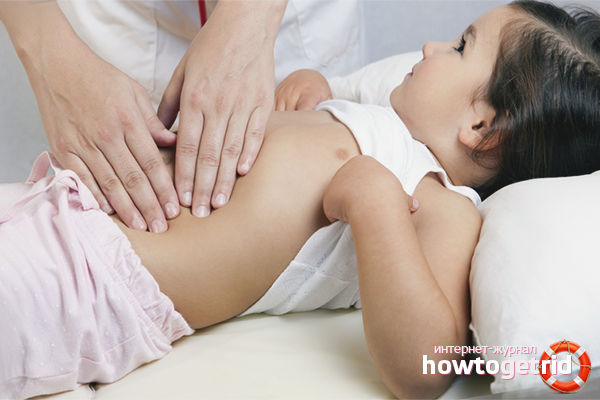
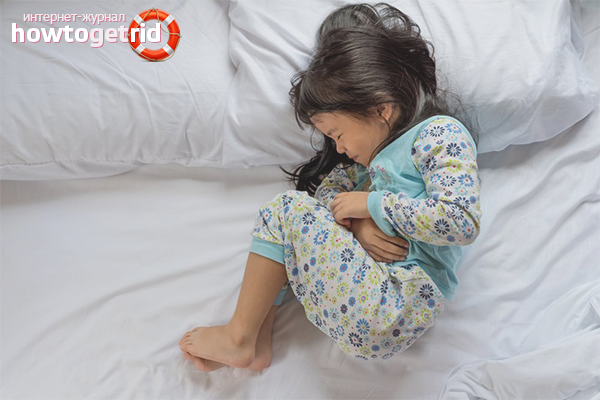
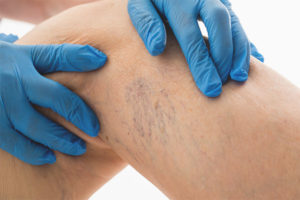
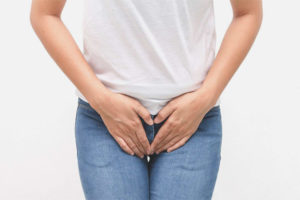
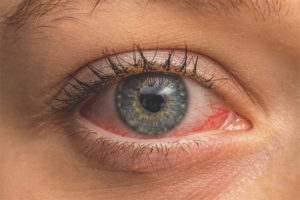



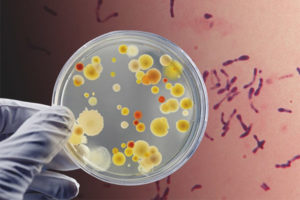

Submit